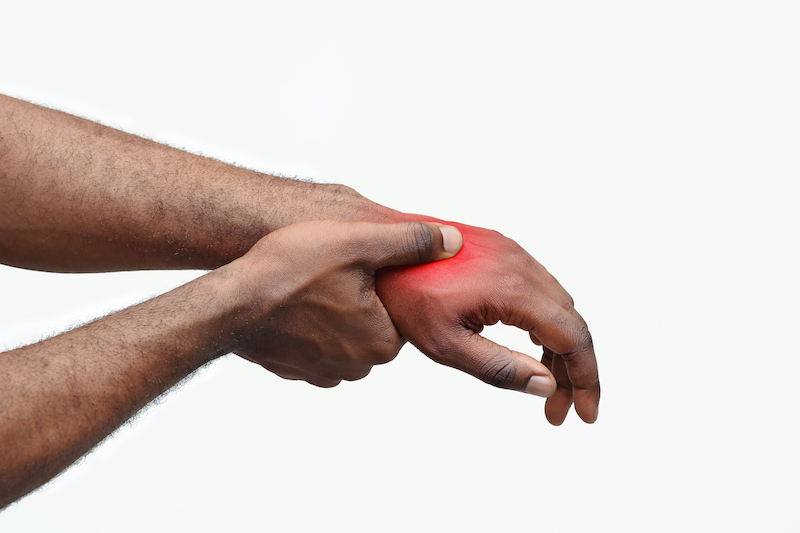- Empty cart.
- Continue Shopping
Carpal Tunnel Syndrome: What Men Need to Know

Carpal Tunnel Syndrome (CTS) is a common and potentially debilitating condition that affects both men and women. However, men may have different risk factors and experiences with CTS compared to women.
Understanding Carpal Tunnel Syndrome
Carpal Tunnel Syndrome is a condition that occurs when the median nerve, which runs from the forearm into the hand, becomes compressed or squeezed as it passes through the carpal tunnel—a narrow passageway in the wrist formed by bones and ligaments. This compression can lead to a range of symptoms that affect hand and wrist function.
Common Causes and Risk Factors in Men
While Carpal Tunnel Syndrome can affect anyone, certain risk factors and causes may be more relevant to men:
1. Occupational Factors
Jobs that involve repetitive hand and wrist movements, such as typing, assembly line work, construction, and heavy machinery operation, can increase the risk of CTS in men. Men are often overrepresented in industries and professions that require repetitive hand motions.
2. Hand Tool Usage
Men are more likely to use hand tools and power tools extensively, which can put additional strain on the wrist and contribute to CTS development.
3. Sports and Hobbies
Certain sports and recreational activities, such as racquet sports, weightlifting, and activities that involve gripping or vibrating tools, may increase the risk of CTS in men who participate in these activities regularly.
4. Existing Health Conditions
Pre-existing conditions such as obesity, diabetes, rheumatoid arthritis, and thyroid disorders can increase the risk of CTS in both men and women. Men with these conditions should be particularly vigilant for CTS symptoms.
Common Symptoms
Carpal Tunnel Syndrome can present with a range of symptoms, including:
- Numbness and tingling: Most commonly in the thumb, index, middle, and ring fingers.
- Pain or discomfort: Radiating from the wrist to the hand or up the forearm.
- Weakness: Difficulty gripping objects or performing fine motor tasks.
- Nighttime symptoms: Symptoms may be more pronounced at night or during activities that involve wrist flexion and extension.
Diagnosis and Treatment
If you suspect you have Carpal Tunnel Syndrome, it’s essential to seek a proper diagnosis from a healthcare provider. A physical examination, along with nerve conduction tests and electromyography, can help confirm the diagnosis.
Treatment options for CTS in men may include:
1. Lifestyle Modifications
- Ergonomic changes: Adjusting workstations and tools to reduce wrist strain.
- Wrist splints: Wearing a wrist splint at night to keep the wrist in a neutral position and alleviate symptoms.
2. Medications
- Nonsteroidal anti-inflammatory drugs (NSAIDs): These may help reduce pain and inflammation.
- Corticosteroid injections: Injected into the carpal tunnel to relieve symptoms.
3. Physical Therapy
Physical therapy exercises can help strengthen the wrist and improve flexibility.
4. Surgery
For severe cases or when conservative treatments fail to provide relief, surgical options like carpal tunnel release surgery may be considered. This surgery involves cutting the ligament that forms the top of the carpal tunnel, relieving pressure on the median nerve.
Prevention and Management
Men can take steps to reduce their risk of Carpal Tunnel Syndrome:
- Ergonomics: Ensure that workstations and tools are ergonomically designed to reduce wrist strain.
- Regular breaks: Take frequent breaks during repetitive tasks to rest and stretch the hands and wrists.
- Proper technique: Use proper techniques and body mechanics when using hand tools or engaging in repetitive tasks.
- Wrist splints: Consider wearing wrist splints during activities that may exacerbate symptoms.
In Conclusion,Carpal Tunnel Syndrome is a condition that affects both men and women, and it can have a significant impact on daily life and work. Men may be more prone to certain risk factors due to occupational and lifestyle factors. Recognizing the symptoms, seeking early diagnosis and treatment, and making lifestyle modifications can help men effectively manage and reduce the impact of Carpal Tunnel Syndrome on their well-being and quality of life.








